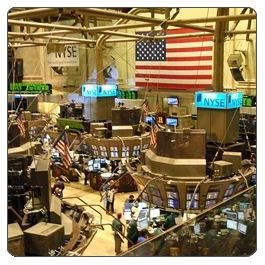Stock Market: How Does the Dow Jones Work?
History of Dow Jones Index
The Dow Jones Industrial Average (DJIA) is the oldest and most widely followed stock market index. Although the Dow Jones Company has other stock market indexes, the DJIA is what everyone thinks of when referring to the Dow, Dow Jones, or Dow Jones index. The answer to how the Dow Jones works starts with the history of the index.
Charles Dow invented the Dow Jones Industrial Average in 1896. He selected 12 leading industrial companies, added up the share prices of the companies and dividend by 12. From 1896 until 1928, the Dow Jones index remained a true mathematical average. Share prices were added and divided by the number of stocks in the index. 1928 was also the year the DJIA reached its current level of 30 components when the number of stocks tracked by the Average was increased from 20 to 30.
Dow Component Stocks
The Dow Jones Industrial Average is based on the share prices of 30 stocks. The companies or components of the Dow are chosen by the Dow Jones Company. Component stocks are chosen to represent the largest companies with the most actively traded stocks of American business. The Dow components no longer consist strictly of industrial companies. Service companies have become a large part of the U.S. economy. Some of the Dow Jones components include McDonald’s, Intel, Johnson & Johnson, Coca Cola and American Express. See a full list of DJIA stocks.
Stocks are dropped from the DJIA if the companies fall on hard financial times, get bought out, or merge into another company. A bankruptcy definitely gets a stock booted from the Dow Jones. The last changes to the Dow components where in 2009. In June of that year, Citigroup was dropped and replaced by Travelers Insurance. On the same date, General Motors was removed from the Average and replaced by Cisco Systems. An interesting note: Travelers merged with Citibank in 1998 to form Citigroup. Then Travelers Insurance was spun off from Citigroup in 2002.
Calculating the Dow Jones Industrial Average
When the components of a stock index are affected by stock substitutions, spinoffs and stock splits, the market price of the shares change but the total value of the company stock - market cap - does not change. If the calculation of an average is not adjusted for these non-economic events, the index will not provide an accurate picture of how the stock market is performing.
The Dow Jones index is still calculated by adding up the share prices of all 30 stocks. But the total is not longer divided by 30. A divisor is used that accounts for the non-economic changes to the Dow stocks through the years. As of February 2011, the divisor for the Dow Jones Industrial Average is 0.132129493. Every few seconds while the stock market is open, the Dow Jones Company adds up the share prices of the 30 component stocks, divides the total by the current divisor and reports the current level of the Dow Jones index to the investing world. This is how the Dow Jones works.
References
Dow Jones Indexes https://www.djaverages.com/
Photo: Flickr Creative Commons Attribution / BlatantNews
